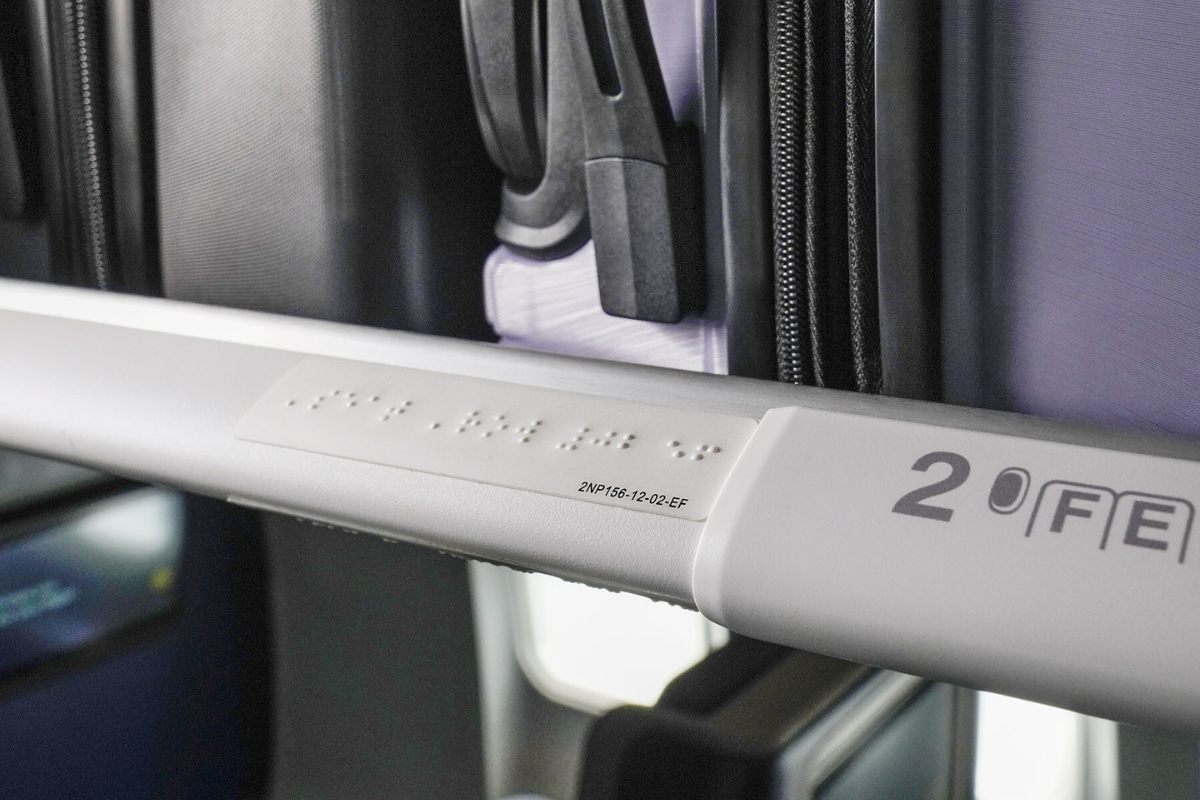
United Airlines is becoming the first U.S.-based carrier to add braille signage throughout its airplane cabins to help blind and partially sighted passengers locate their seat rows and the onboard lavatories.
So far, United Airlines has installed the signage on just 12 of its aircraft, which equates to less than 1% of the Chicago-based carrier’s fleet. United says it will take until 2026 for the braille signage to be fitted across its more than 1,400 aircraft.
Explaining the initiative, Linda Jojo, United’s executive vice president and chief customer officer, said the airline was trying to become more inclusive and accessible.
“Finding your seat on a plane or getting to the restroom is something most of us take for granted, but for millions of our customers, it can be a challenge to do independently,” Jojo commented on Thursday.
“By adding more tactile signage throughout our interiors, we’re making the flying experience more inclusive and accessible, and that’s good for everyone.”
Before embarking on the project, United worked with the National Federation of the Blind (NFB) and the American Council of the Blind (ACB) on the best way to add tactile signage in the aircraft cabin.
NFB President Mark Riccobono said he hoped the organisation would have the opportunity to work on other ways to make flying more accessible and less stressful for blind passengers.
In addition to its braille signage initiative, United recently updated its mobile app to make it easier for partially sighted people to use with increased color contrast and more space between graphics. The app can also work better with screen reader apps.
United has also been praised for its work to make its inflight entertainment system more accessible with closed captioning, text-to-speech controls, magnification, audio-described movies, and adjustable and high-contrast text and color correction all possible.
Yesterday, the Department of Transportation (DOT) published a final rulemaking that will force airlines and aircraft manufacturers to make aircraft lavatories on single-aisle aircraft more accessible for passengers with reduced mobility.
The policy will force airlines to build larger restroom, although the rulemaking will only apply to new built aircraft and it only comes into force 12 years from now.
Mateusz Maszczynski honed his skills as an international flight attendant at the most prominent airline in the Middle East and has been flying ever since... most recently for a well known European airline. Matt is passionate about the aviation industry and has become an expert in passenger experience and human-centric stories. Always keeping an ear close to the ground, Matt's industry insights, analysis and news coverage is frequently relied upon by some of the biggest names in journalism.







